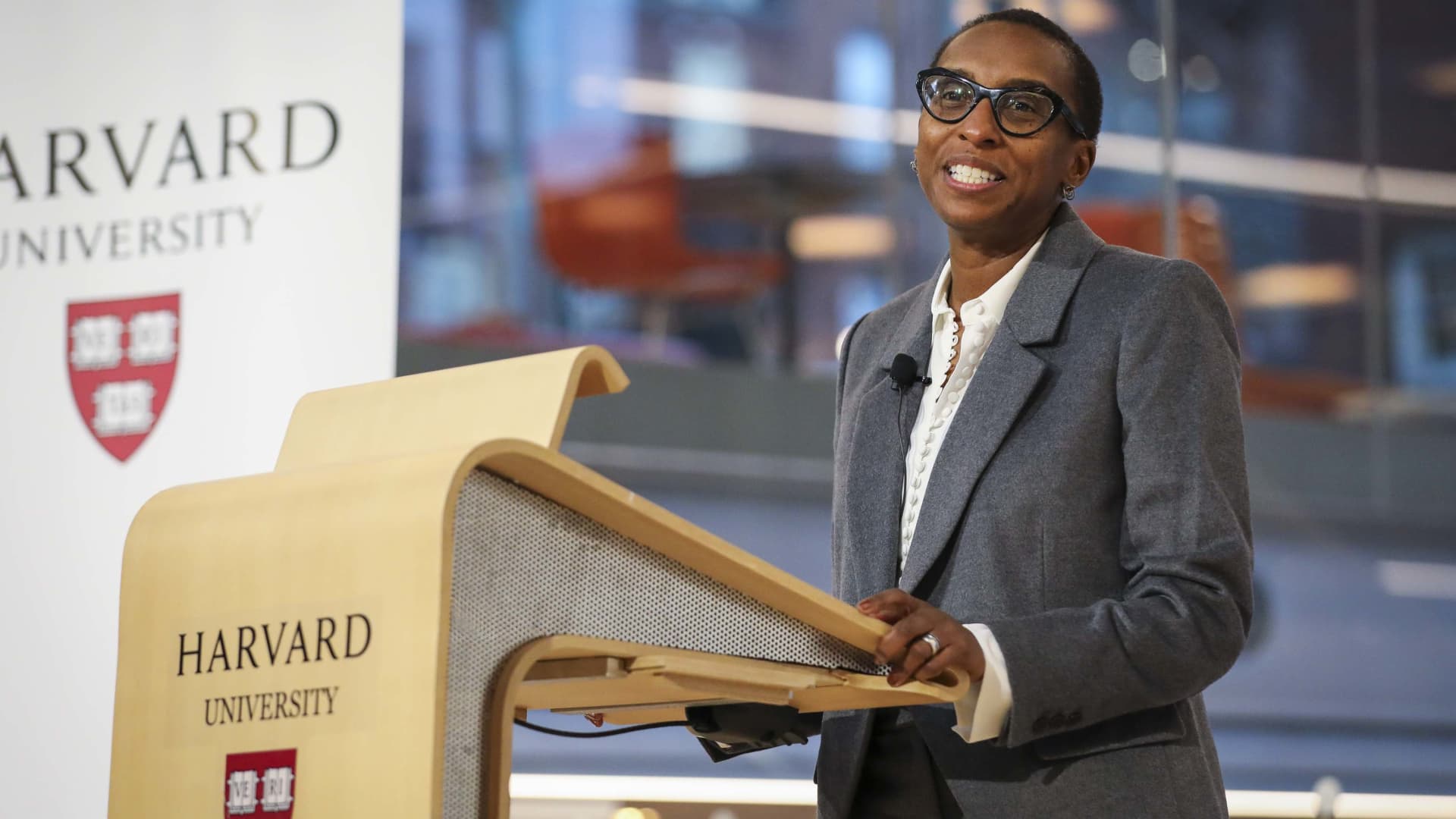DEI opponents are using a 1866 Civil Rights law to challenge equity policies in the workplace
Opponents of diversity programs are increasingly banking on an 1866 civil rights law meant to protect Black people from economic exclusion as a way to challenge corporate diversity and equity policies as well as funding to Black-owned businesses.
DEI opponents are using a 1866 Civil Rights law to challenge equity policies in the workplace
File - Conservative activist Edward Blum speaks at a news conference in Washington, June 29, 2023. Blum is citing Section 1981 of the Civil Rights Act of 1866 to go after a venture capital fund called Fearless Fund, which invests in businesses owned by women of color. (AP Photo/Jose Luis Magana)
NEW YORK (AP) — Opponents of workplace diversity programs are increasingly banking on a section of the Civil Rights Act of 1866 to challenge equity policies as well as funding to minority-owned businesses.
Section 1981 of the act was originally meant to protect formerly enslaved people — or Black people specifically — from economic exclusion. But now the American Alliance for Equal Rights — a group run by Edward Blum, the conservative activist who challenged affirmative action in higher education and won — is citing the section to go after a venture capital fund called the Fearless Fund, which invests in businesses owned by women of color. A federal appeals court temporarily blocked funding for Fearless Fund’s grant program as the case proceeds.
Conservative activists have brought lawsuits using the 1981 section against other companies and institutions, including insurance company Progressive and pharmaceutical giant Pfizer. The cases are being monitored carefully as the battle over racial considerations shift to the workplace following the U.S. Supreme Court’s June ruling ending affirmative action in college admissions.
While the 1981 section had been used well before the latest affirmative action ruling to prove reverse discrimination, Alphonso David, Fearless Fund’s legal counsel who serves as president & CEO of The Global Black Economic Forum, said that there’s a “coordinated use of Section 1981 now that we did not see before.”
Read more
Here’s what’s happening and what the impact could be:
What is Section 1981?
The 1866 Civil Rights Act is a federal law prohibiting discrimination on the basis of race, color, and ethnicity when making and enforcing contracts. Section 1981 specifically grants all individuals within the U.S. jurisdiction the same rights and benefits as “enjoyed by white citizens” regarding contractual relationships.
However, the Supreme Court’s 1976 McDonald v. Santa Fe Trail Transportation decision broadened those protections, ruling Section 1981 prohibits racial discrimination in private employment against white people as well as people of color.
“It’s a very clever game plan,” said Randolph McLaughlin, a civil rights attorney and law professor at Pace University, referring to the use of the 1866 law. “They want to turn civil rights law upside down.”
The standard of proof for the 1981 section is high. That’s because of the Supreme Court’s 2020 decision in Comcast v. National Association of African American-owned Media establishing that the plaintiff who sues for racial discrimination under the section bears the burden of showing that race was the central cause in denying a contract opportunity — as opposed to merely a motivating factor.
Why not rely on Title VII instead?
Title VII of the 1964 Civil Rights Act protects employees and job applicants from employment discrimination based on race, color, religion, sex and national origin. If the plaintiff opts to sue via Title VII, then he or she needs to file a charge with the Equal Employment Opportunity Commission. That’s a process that takes up to 180 days. After that, the plaintiff can file a lawsuit. Choosing the 1981 route is much quicker.
Section 1981 is also broader than Title VII, which generally applies to employers who have 15 or more employees, legal experts said. Also under Title VII, a plaintiff can recoup only up to $300,000 in compensatory and punitive damages total. Section 1981 has no limitation.
Title VII does have a lower standard of proof than Section 1981. Plaintiffs only have to show race was a motivating factor, not a central cause.
Why is the case against the Fearless Fund potentially significant?
In its lawsuit, American Alliance For Equal Rights seeks relief by arguing that the fund’s Fearless Strivers Grant Contest, which awards $20,000 to Black women who run businesses, violates Section 1981 by excluding some people from the program because of their race.
Attorneys for the Fearless Fund have argued in court filings that the grants are donations, not contracts, and are protected by the First Amendment.
David, the Fearless Fund’s legal counsel, says that if these types of grants are considered contracts, one can make the argument that grants issued in many other forms and contexts could also be considered contracts.
“Think of every foundation out there that issues grants,” David said. “They issue grants to people of different demographic groups. They issue grants only to women. They issue grants to survivors of earthquakes. Are those all contracts?”
Angela Reddock-Wright, an employment and Title IX attorney and mediator based in Los Angeles, believes it is “very possible” that the case could end up at the Supreme Court.
“Ideally, the court would decline to hear this matter on the grounds that Section 1981 was not intended to cover matters such as this, but this court appears to operate under different rules and standards,” she said.
What impact have similar lawsuits had?
Some companies have already changed their criteria for their diversity fellowship programs.
Law firms Morrison Foerster and Perkins Coie opened their diversity fellowship programs to all applicants of all races in October, changes the companies said were in the works before Blum filed lawsuits against them. He subsequently dropped them. Previously, the programs for first year law students had targeted students in historically underrepresented groups.
Morrison Foerster’s fellowship program now caters to students with demonstrated commitments to equity and diversity. Perkins Coie announced that it had opened its fellowship programs to all applicants, regardless of their race, gender or LGBTQ identity. In a statement, Perkins Coie said the changes arose as part of updates to its diversity and inclusion policies following the Supreme Court’s ruling on affirmative action.
Last February, Pfizer dropped race-based eligibility requirements for a fellowship program designed for college students of Black, Latino and Native American descent. A judge had dismissed a lawsuit filed by the conservative nonprofit Do No Harm, which claimed Pfizer’s program violated Section 1981, but Do No Harm is appealing the ruling.
“What would work in (companies’) favor is to lower their profile,” said University of Virginia’s Distinguished Professor of Law George Rutherglen. “Which means they do not explicitly consider race in making these decisions. Look to other conditions and requirements that might achieve the same objective.”
______
AP Business Writer Haleluya Hadero in New York contributed to this report.




